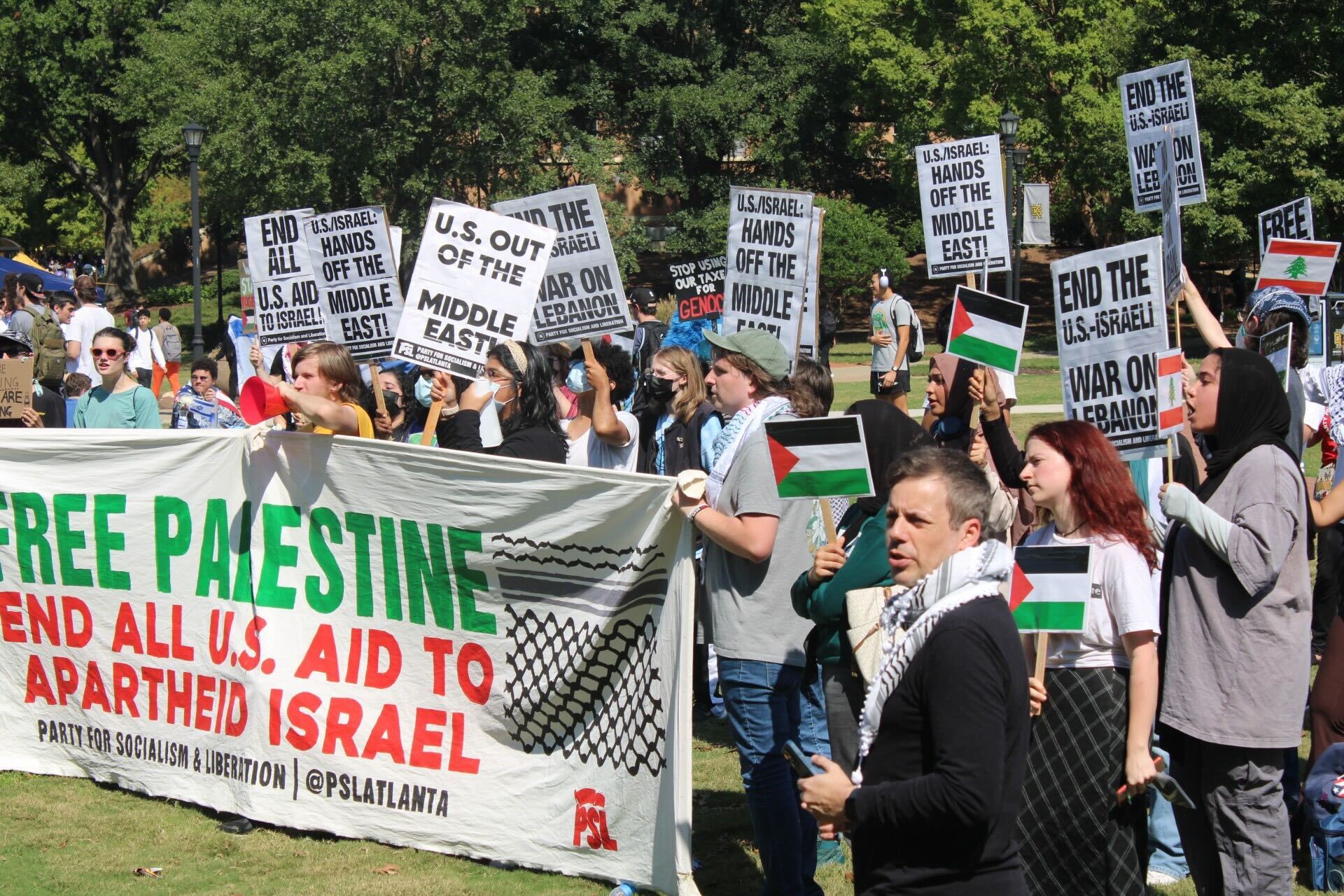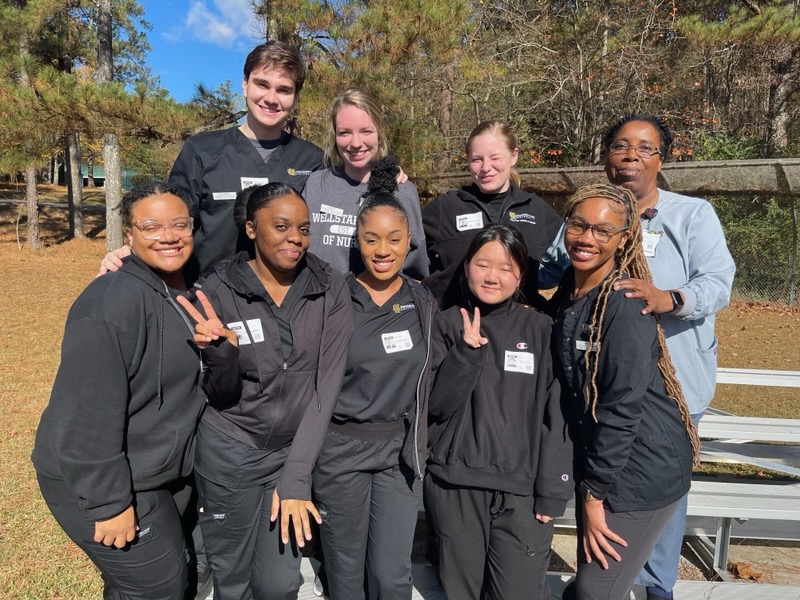Interviews conducted by Zaire Breedlove and Mary Wingate
After almost 15 months of conflict, the war in the Gaza has officially come to an end as Israeli and Hamas Officials agree to a ceasefire, according to officials.
After almost 460 days of devastating conflict, a temporary ceasefire deal has reportedly been reached between Hamas and Israel.
While Israeli Prime Minister Benjamin Netanyahu’s office maintains that final details are still being worked on, other sources, including U.S. President-elect Donald Trump, suggest an agreement is in place. Mediators involved in the negotiations, including officials from Egypt, Qatar, and the United States, have also confirmed the developments.
This ceasefire comes after Israel’s military campaign in Gaza which was initiated in October 2023 and has claimed the lives of over 46,000 Palestinians, with more deaths yet to be confirmed according to New York Times.
If implemented, the agreement is expected to include a prisoner exchange, the release of captives, and the return of displaced Palestinians to their homes in Gaza, However, the scale of the destruction in the region raises concerns among many about the possibility of rebuilding efforts.
The initial phase of the ceasefire, expected to last six weeks, will outline significant steps toward de-escalation. Israel plans to release approximately 2,000 Palestinian prisoners, including those detained after October 2023, in exchange for 33 Israeli captives. The partial withdrawal of IDF troops from Gaza’s densely populated urban areas are also a part of this phase.
Additional measures including the allowance of up to 600 aid trucks per day into Gaza, the reopening of the Rafah crossing with Egypt, and the evacuation of injured Palestinians for medical treatment. While civilians may begin returning home, much of Gaza has been left in ruins.
Despite these plans, Israeli forces are expected to maintain a presence in specific areas, such as the Netzarim Corridor, during the initial stages of Ceasefire. Future phases will depend on the success of these preliminary steps and further negotiations.
The path forward remains uncertain for the general public. While Israel has refrained from providing written guarantees to prevent a regrowth of possible hostilities, verbal assurances from mediators have encouraged continued discussion. The subsequent phases of the agreement hinge on conditions being met during the initial phases, including the release of additional captives and further troop withdrawals.
Reconstruction and governance in Gaza pose additional challenges. International supervision and cooperation from Arab states will be essential for rebuilding efforts.
U.S. Secretary of State Antony Blinken has advocated for an interim governing authority led by the Palestinian Authority with support from international and regional partners. However, differing views among Israeli lawmakers indicate the need for a clear path to Palestinian statehood may complicate these plans.
The ceasefire, however, offers a glimmer of hope amid widespread devastation. Jack Jordan, a student at Kenneaw State University expressed optimism, saying, “I’m hopeful for the prospect of peace, and I hate seeing women and children die on a daily basis.”
KSU student Caelan Holly shared similar sentiments, saying, “I mean, obviously I’m glad it’s finally gotten here, but it never should’ve taken this long to come to a ceasefire.”
She continued to elaborate on possible rebuilding efforts, “As for if Palestine can rebuild, I really do hope so. It’s heartbreaking to see the amount of devastation caused by a war that never should’ve happened.”
Another KSU student, Daniel Yeganeh, described the agreement as a “very important step towards global peace,” but highlighted the immense financial resources it will require for the reconstruction of Gaza,
“It would take a lot of international funding,” Yeganeh said.
Two other students from Kennesaw State, Logan and Aaron also expressed their views.
Logan expressed that any form of conflict prevention between both sides of the conflict would be a good thing and beneficial for rebuilding efforts, and that the Israeli occupation needs to end.
“ Israel needs to leave and Israel is not abiding by any military guidelines and are breaking tons and tons of military laws and I don’t think it’s appropriate for them to be as far in as they are and, it’s killed as many people and civilians,” Logan said.
Aaron agreed that Israeli Forces should have never been inside the Gaza to begin with, continuing to say that, “ I think that they have committed war crimes. I just hope the ceasefire lasts, for longer than however long it’s set to.”
On the topic of rebuilding efforts, Logan saw the possibility of rebuilding as an uphill battle due to the geographical location and the amount of destruction that has taken place throughout the Gaza,
“ As far as geography standpoint, they’re in a terrible location. They have very little arable land. They have a coastline with salt water. They have limited fresh water. And they don’t have a structured government, which would [make it] very hard to help roll out aid. I think they can rebuild, but it’s going to take time, and it’s going to take a lot of assistance from international organizations to help,” Logan said.
Students like Nia Grace had a more pessimistic view on possible rebuilding efforts, claiming that, “ While ideally, I would hope that they would be able to rebuild, I don’t see that happening because of this way Israel is moving right now. I just don’t see anyone going in to really help, unless there were other Arab countries.”
She continued to add that she didn’t see rebuilding being truly possible without Israel being held accountable for its role in the War in Gaza, continuing to say, “ I don’t really see it happening unless Israel deals with some serious consequences.”
Jada Barrington, an international relations student, went on to speak on the effects of devastated health infrastructure in Gaza.
“ They’re in poor health. They don’t have health facilities. There’s questions to [if the Gazans] have the means to go forward right now. I feel like the best thing to happen would be for some type of foreign intervention,” She said, referring to international aid.
Barrington went on to elaborate on the different types of foreign aid that could help the people of the Gaza saying, “[other countries should] most definitely [work] to support [Gaza], whether that be money wise, whether that be skilled labor wise. I definitely think they will need help, just because, just the total level of destruction that occurred.”
As the first phase of the ceasefire begins, the world watches to see whether this truce can pave the way for a lasting peace agreement and recovery a the region marked by decades of conflict.



